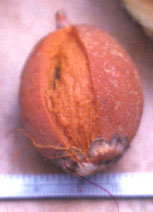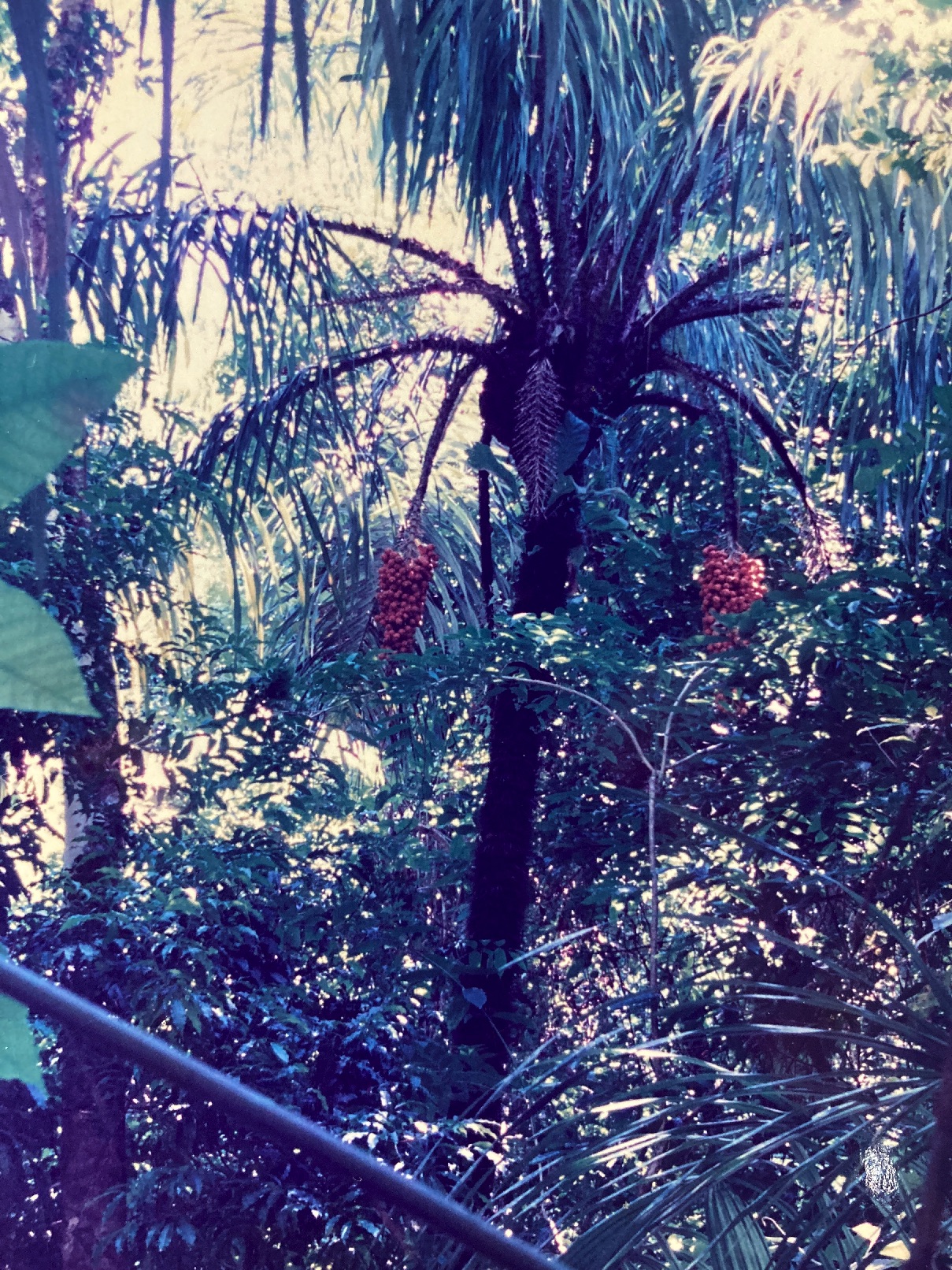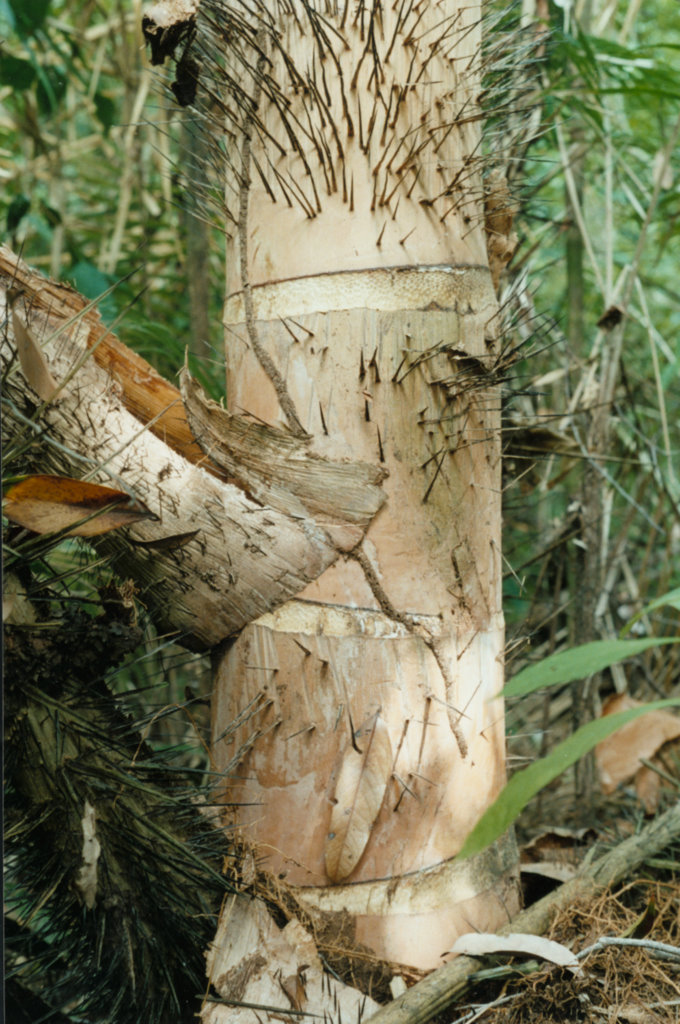Astrocaryum confertum H. Wendl. ex Burret
Arecaceae CHONTADURA
Occasional evergreen understory tree (10-15 m) found growing almost exclusively amid the taller trees of the thick primary forest. Chontadura is easily recognizable as the only large, truly tree-sized palm studded with long, intimidating, spines. When present, its large racemes of orange fruits provide a rare, eye-catching embellishment to the forest understory.
Description: Chontadura has a uniformly cylindrical, straight trunk (25 cm) that is thickly covered by conspicuous, long (7 cm), needle-sharp spines. This dense cloak of piercing armour makes the bole appear woolly and black from a distance, though the outer wood is actually smooth and tan or flesh colored. Only the encircling leaf scars that scour the trunk at periodic intervals lack spines, imparting to them an apparently (but false) spiral arrangement. The leaves of all palms are confined to the region surrounding the apical bud, located at the apex of the trunk. There they project outwards in nearly all directions, forming a nearly globular, feathery crown. Measuring 2.5 m long by 0.80 m wide, each large frond is composed of many long, narrow, ribbony leaflets pinnately arranged along a thickly spined petiole. Unlike the foliage of Palma Real, Chontadura leaflets are not confined to a single plane. Instead they extend randomly in many different directions giving the leaf (and crown) a much bushier appearance.
Flowers are produced on racemes, probably beginning in October and continuing – at a low level – for several months. These racemes appear in the axils of new leaves as these emerge from the apex of the crown. Green or tan immature fruits, borne on the same racemes, may be observed as early as November. Nearly globular, these drupes possess a pronounced distal point and a small proximal calyx. As is also true for Palma Real, the Chontadura harvest is delayed until the start of the rainy season. Full grown racemes, apparently dormant, continue to accumulate in the crowns during the summer – through the month of February. Measuring about 50 cm long and hanging from a spiny, meter-long pedestal, each palm acquires up to three of these large fruit bunches. Ripening begins in May as the fruits turn from tan through pink, finally ending bright orange in color. Harvests begin in June and continue into August, with the palm nuts slowly disappearing from the racemes during this time. The thin, leathery skin of the fruit covers a fibrous layer of softer, orange flesh, and a single, central seed or pit.
Similar Species: Chontadura is one of the Pacific Slope’s only tall palms (10 or 15 meters) with spines. This intimidating armour is an obvious characteristic that is not likely to escape notice.

Natural History: Chontadura flowers are probably pollinated by bees. Its fruits are possibly eaten and dispersed by nimble arboreal mammals in the crown, but I have never seen this occur in the way that it does in Palma Real (Scheelea rostrata). Chontadura spines are a daunting and effective deterrent to predation and they probably evolved to help protect fruits from premature harvest (when seeds not yet developed enough to be viable). Hungry, impatient animals (especially monkeys) have been known to yank off green clusters of unripe fruits, only to taste and quickly reject them. Such behavior benefits neither the host plant nor the foraging animal. Surprisingly enough, even the wind-dispersed seeds and seed pods of Amargo (Aspidosperma sp.) trees – structures that are completely inedible at any time – have been found on the forest floor, tasted and destroyed by monkeys. While most trees (with edible fruit) avoid premature harvest by making the green fruits unpalatable (filling them with sour acids or caustic sap), Chontadura may well achieve this same result with its thick armour of piercing spines. Many of the fruits probably remain unharvested until they fall to the forest floor, where ground-dwelling and scavenging animals (rodents, raccoons, and pizotes) can disperse them.
Uses: According to Allen (1956), Chontadura fruits are edible and its spines are flammable (useful as kindling?). He also states that the wood of this species is black, hard and used for canes, ornamental boxes, and archery bows, among other things.
Distribution: Chontadura can be found within the primary forest. This palm does not inhabit the extreme coastal zone. In Costa Rica, it is also known from the Osa Peninsula. Chontadura ranges from Nicaragua to Panama.


